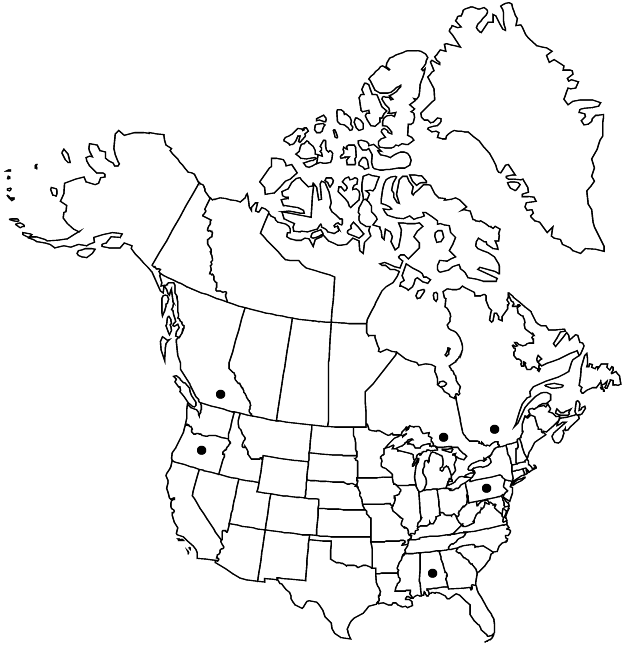Rumex sanguineus
Sp. Pl. 1: 334. 1753.
Plants perennial, normally glabrous, rarely very indistinctly papillose on veins of leaf-blades abaxially, with fusiform, vertical rootstock. Stems erect, branched in distal 2/3, sometimes branched almost from base or with few flowering-stems from rootstock, 30–70 (–90) cm. Leaves: ocrea deciduous to partially persistent at maturity; blade oblong-lanceolate, obovate-lanceolate, or lanceolate, normally (5–) 10–30 × 2.5–6 cm, base rounded, truncate, or subcordate, rarely cuneate, margins entire to obscurely repand, flat to slightly undulate, apex acute or subacute, occasionally attenuate. Inflorescences terminal, occupying distal 2/3 of stem, lax, interrupted, broadly paniculate, branches simple or nearly so; panicle leafless or leafy only near base. Pedicels articulated in proximal 1/3 or rarely near middle, filiform, (2–) 4–6 (–8) mm, normally distinctly longer than inner tepals, articulation distinctly swollen. Flowers 10–20 in lax, remote whorls; inner tepals oblong-lanceolate, oblong, or lingulate, 2–3 × 0.8–1.3 (–1.8) mm, ca. 2 times as long as wide, base cuneate or subtruncate, margins entire, apex obtuse; tubercle 1 (occasionally 3, then 1 much larger, almost as wide as inner tepals). Achenes usually dark reddish-brown to almost black, 1.25–1.5 (–1.8) × 1–1.3 mm. 2n = 20.
Phenology: Flowering summer.
Habitat: Moist alluvial and riparian habitats, ruderal places, ballast grounds
Elevation: 0-500 m
Distribution

Introduced; B.C., Ont., Que., Ala., Oreg., Pa., Europe, sw Asia, n Africa
Discussion
Distribution of Rumex sanguineus in North America is known insufficiently. Most reports from California, Washington, New Brunswick, Nova Scotia, Ontario, and Quebec were based on misidentified specimens of R. conglomeratus or immature R. obtusifolius.
Rumex sanguineus is represented in Europe by at least two varieties. The uncommon, cultivated, and occasionally escaped var. sanguineus (redvein dock or bloodwort) has bright red or purple venation of leaves. It probably arose as a mutant from the common, wild var. viridis Sibthorp.
Selected References
None.
Lower Taxa
"/2" is not declared as a valid unit of measurement for this property.